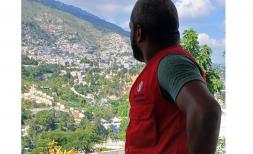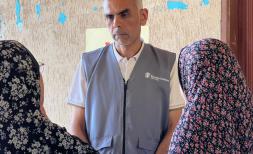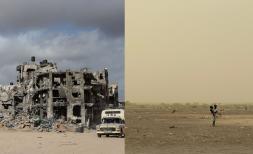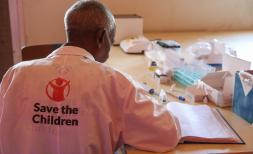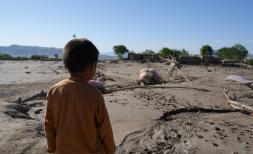Pakistan went from heatwaves to flood-waves in three months. What’s going on?
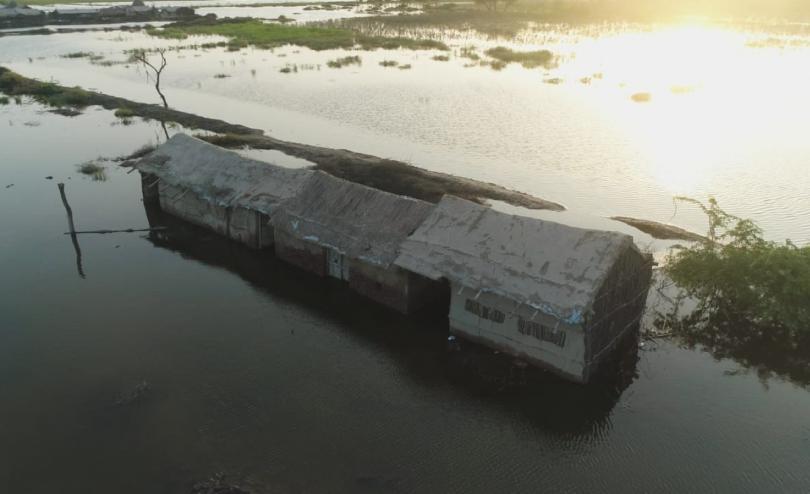
Donate to our Children's Emergency Fund to help us respond quickly to children living in crisis in countries like Pakistan.
THE CLIMATE CRISIS IS HERE
A third of Pakistan is under water, submerged after one of the worst monsoon seasons in recent history. Yet three months ago, the country was in the grips of a murderous heatwave, with temperatures regularly over 50˚C. Both crises were and are unprecedented and superlative, both accompanied by handwringing by world leaders and calls for greater attention on the global climate emergency.
But for the South Asian nation, calls to avert an emergency are too late. The country is a victim – and will become a survivor – of a climatic catastrophe which, if it continues to be given the lacklustre attention it’s getting from global polluters, will ultimately hurt us all.
Pakistan’s government is working hard to support the 33 million people, including 16 million children, affected by the floods. However, it and no other country on earth is properly prepared to deal with a crisis like this. The devastation is the worst in the country’s history, in a country that is no stranger to disasters, and yet it is bracing for more death and destruction in coming weeks.
UNEQUAL IMPACT
The tragic reality is the children experiencing the worst of these floods were already the poorest to begin with. Save the Children estimates[1] of the approximately 16 million children directly impacted by the floods, nearly two thirds of them (64%) were already poor before the flooding – more than the national average (54%). These kids were already living in rickety homes, with packed-mud floors, or in informal settlements, who may or may not have been in school. We know from the 2010 floods that these kinds of disasters will just foster even deeper poverty and inequality, with receding floodwaters leaving already-stretched families facing the daunting prospect of rebuilding homes and livelihoods.
Pakistan is of course not alone in facing these extreme climatic events. Elsewhere in Asia and around the world we are seeing increasingly frequent extremes – with impacts again felt unequally with lower income communities generally both worst affected, and least able to cope. And this inequality is both at personal and national scales, with lower income countries the least responsible for global emissions yet facing the highest cost of increasingly frequent climate disasters. Pakistan is ranked as one of the most vulnerable countries to climate change, while it contributes less than 1% of the global greenhouse gas emissions.
THE KIDS AREN’T ALRIGHT
Last year Save the Children partnered with an international team of leading climate researchers led by the Vrije Universiteit Brussel to release a ground-breaking report of how children who are already experiencing inequality and discrimination are particularly vulnerable to impacts of climate change. The report Born into the Climate Crisis, showed that over their lifetimes, children born in 2020 would on average be exposed to almost 3 times as many floods and droughts as their grandparents born in 1960 under current climate pledges. But the report recognised many regional differences, with even the most conservative estimates showing several countries and regions at much higher risk. Children in Pakistan, for example, could face over 6 times more floods than their grandparents – twice the global average.
WHAT NEXT?
In addition to the obvious need to continue to step up humanitarian relief efforts – in Pakistan, in the countries experiencing drought and extreme hunger in the Horn of Africa including Somalia, Kenya and Ethiopia – and in a devastatingly long list of other countries from Afghanistan to Yemen –global polluters have to focus on the underlying causes of these crises.
Every fraction of a degree of warming matters, and current pledges are clearly not enough. For the sake of our children, who over their lifetimes will bear the costs of inaction – we must not fail to make the right choices to limit emissions as rapidly as possible.
We must invest in child-sensitive and locally led adaptation approaches. Waiting for disaster to strike, and responding is too little, too late for the victims, but also poor economics. Recent estimates suggest less than 10% of climate finance is dedicated to local action, less than 2% humanitarian aid goes directly to local partners, and less than 5% goes to indigenous peoples and local communities.
And we can no longer stall on compensation for the harmful impacts of the climate crisis that poorer nations cannot avoid. Conservative estimates show the climate crisis has already cost low and lower middle-income countries more than half a trillion dollars, with Pakistan suffering damages of US$77 billion between 1998 and 2017. COP26 failed to grapple with this topic, but as floods, droughts, extreme heat waves are making clear – these costs are only escalating as we fail to make agreements. COP27, to be held in Egypt, must surely help make progress on this issue.
It is time for the global community to harness every bit of its shared humanity and solidarity to the address problem at hand – tackling the climate crisis in ways that provide a hopeful future not just for Pakistan, but for all our children.
How you can help
Save the Children is already operating in the worst affected provinces and deploying teams to the hardest-hit areas.
Children and their families are in desperate need. Donate to our Children's Emergency Fund to help us respond quickly to children living in crisis in countries like Pakistan.
About the authors:
Rajib Ghosal - Asia-Pacific Regional Senior Technical Advisor, Climate Change and Child Poverty, Save the Children International
Rajib Ghosal leads the Climate Change and Child Poverty Team at Save the Children International, Asia-Pacific Region. Has 27 years of progressively responsible technical and managerial experience working on humanitarian response, development and climate change. Previously, he worked with leading international, inter-governmental, non-profit, treaty-based organizations and multi-lateral development banks like The Green Climate Fund; UNICEF; United Nations Development Programme; World Bank; Asian Development Bank; United Nations Office for Project Services; CARE International, India; Aga Khan Foundation, US; Natural Resources International, UK; Asian Forest Cooperation Organization, South Korea; Union of Concerned Scientists, US; and Child Rights and You, India.
Yolande Wright – Global Director Child Poverty, Climate and Urban, Save the Children International
Yolande leads Save the Children’s global team on child poverty, the climate crisis and ensuring child wellbeing in an increasingly urban world. She has over 20 years working in international development, mainly for the UK government (formerly DFID) in a range of roles including as Head of the Conflict, Humanitarian and Security Department (CHASE), and as Head of the Livelihoods Profession. She worked for over a decade in Africa and Asia – including in Bangladesh where she led some ground-breaking work on extreme poverty and climate change working with national and international partners – including BRAC, World Bank, UNDP and WFP.
[1] We use the Demographic and Health Survey for Pakistan 2017/18 to estimate multidimensional poverty for each of the eight regions (based on previous work by UNICEF/Save the Children). Poverty is measured by material deprivations in water, sanitation, housing, education, health, and nutrition, using severe thresholds for each indicator (see UNICEF). We use information from FAO Pakistan to identify the districts affected by the monsoon (29 August 2022). We assume that the distribution of the 16m affected children follows the distribution of all children across the affected districts. Finally, we assume that poverty rates in each districts are equal to the prevalence of child poverty across the wider region the districts are located in. This is a very conservative assumption, as we would expect that poorer children live in more risk-prone areas.
